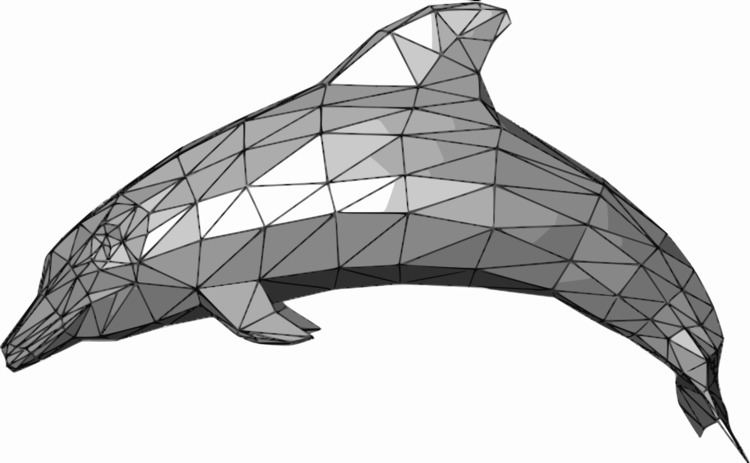 | ||
Geometry processing, or mesh processing, is an area of research that uses concepts from applied mathematics, computer science and engineering to design efficient algorithms for the acquisition, reconstruction, analysis, manipulation, simulation and transmission of complex 3D models. As the name implies, geometry processing is meant to be analogous to signal processing and image processing. Many concepts, data structures and algorithms are directly analogous. For example, where image smoothing might convolve an intensity signal with a blur kernel formed using the Laplace operator, geometric smoothing might be achieved by convolving a surface geometry with a blur kernel formed using the Laplace-Beltrami operator.
Contents
- Properties of a Shape
- Poisson Reconstruction from Surface Points to Mesh
- Registration
- Smoothing
- Parameterization
- References
Applications of geometry processing algorithms already cover a wide range of areas from multimedia, entertainment and classical computer-aided design, to biomedical computing, reverse engineering and scientific computing.
Geometry processing is a common research topic at SIGGRAPH, the premier computer graphics academic conference, and the main topic of the annual Symposium on Geometry Processing.
Properties of a Shape
Geometry processing involves working with a shape, usually in 2D or 3D, although the shape can live in a space of arbitrary dimensions. The processing of a shape involves three stages, which is known as its life cycle. At its "birth," a shape can be instantiated through one of three methods: a model, a mathematical representation, or a scan. After a shape is born, it can be analyzed and edited repeatedly in a cycle. This usually involves acquiring different measurements, such as the distances between the points of the shape, the smoothness of the shape, or its Euler characteristic. Editing may involve denoising, deforming, or performing rigid transformations. Finally, at the final stage of the shape's "life," it is consumed as a product. For example, it can be sent to a 3D printer to be used as a physical model.
Like any other shape, the shapes used in geometry processing have properties pertaining to their geometry and topology. The geometry of a shape concerns the position of the shape's points in space, tangents, normals, and curvature. It also includes the dimension in which the shape lives (ex.
Poisson Reconstruction from Surface Points to Mesh
Depending on how a shape is initialized or "birthed," the shape might exist only as a nebula of sampled points that represent its surface in space. To transform the surface points into a mesh, the Poisson reconstruction strategy can be employed. This method states that the indicator function, a function that determines which points in space belong to the surface of the shape, can actually be computed from the sampled points. The key concept is that gradient of the indicator function is 0 everywhere, except at the sampled points, where it is equal to the inward surface normal. More formally, suppose the collection of sampled points from the surface is denoted by
The task of reconstruction then becomes a variational problem. To find the indicator function of the surface, we must find a function
Registration
One common problem encountered in geometry processing is how to merge multiple views of a single object captured from different angles or positions. This problem is known as registration. In registration, we wish to find an optimal rigid transformation that will align surface
An iterative solution, known as Iterative Closest Point, is usually employed. n random sample points from
Smoothing
When shapes are defined or scanned, there may be accompanying noise, either to a signal acting upon the surface or to the actual surface geometry. Reducing noise on the former is known as data denoising, while noise reduction on the latter is known as surface fairing. The task of geometric smoothing is analogous to signal noise reduction, and consequently employs similar approaches.
The pertinent Lagrangian to be minimized is derived by recording the conformity to the initial signal
Taking a variation
By discretizing this onto piecewise-constant elements with our signal on the vertices we obtain
where our choice of
Where
Parameterization
Paremeterization refers to strategies employed in mapping a 3D mesh onto a 2D surface.
